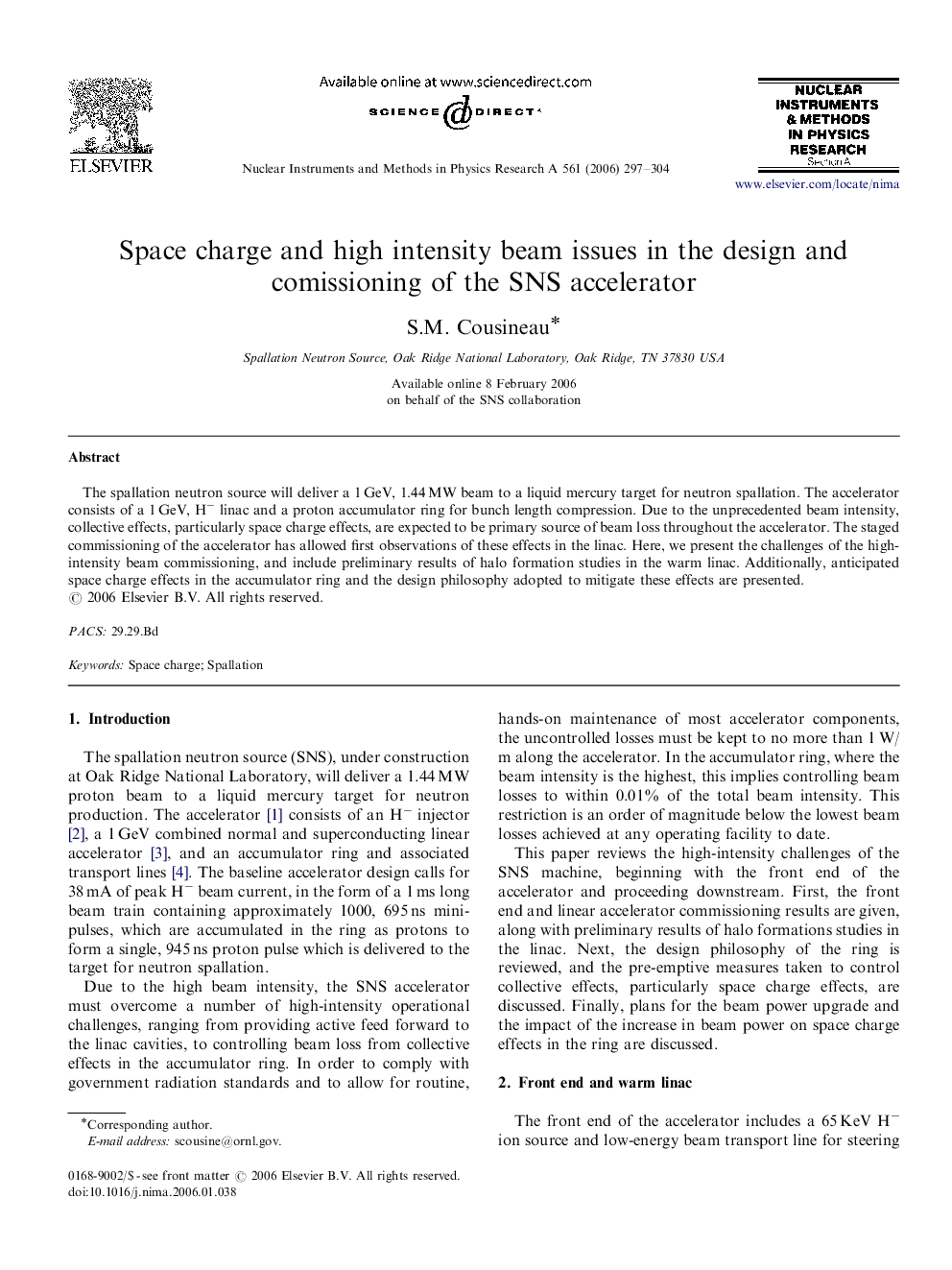| Article ID | Journal | Published Year | Pages | File Type |
|---|---|---|---|---|
| 1833165 | Nuclear Instruments and Methods in Physics Research Section A: Accelerators, Spectrometers, Detectors and Associated Equipment | 2006 | 8 Pages |
The spallation neutron source will deliver a 1 GeV, 1.44 MW beam to a liquid mercury target for neutron spallation. The accelerator consists of a 1 GeV, H− linac and a proton accumulator ring for bunch length compression. Due to the unprecedented beam intensity, collective effects, particularly space charge effects, are expected to be primary source of beam loss throughout the accelerator. The staged commissioning of the accelerator has allowed first observations of these effects in the linac. Here, we present the challenges of the high-intensity beam commissioning, and include preliminary results of halo formation studies in the warm linac. Additionally, anticipated space charge effects in the accumulator ring and the design philosophy adopted to mitigate these effects are presented.
